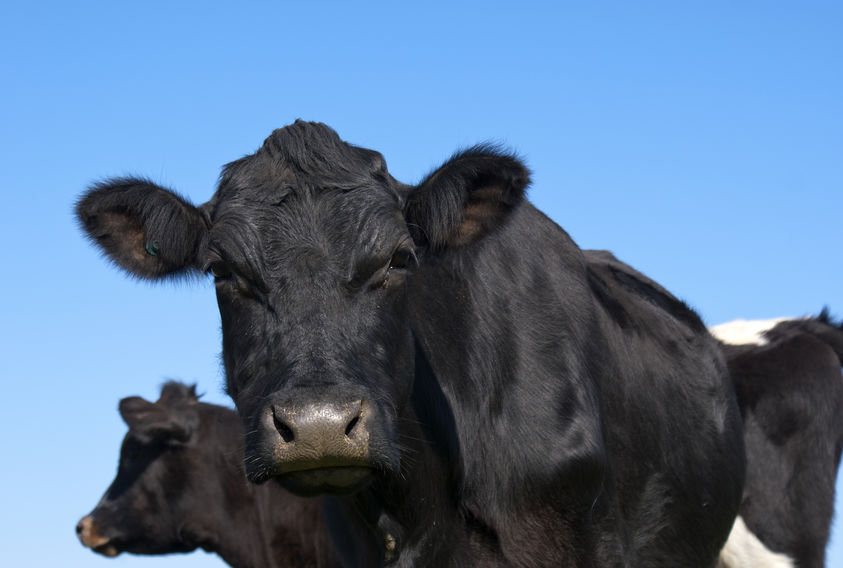
A key issue in the beef sector for Scotland’s farmers since September has been a lower R4L steer price at Scottish abattoirs than for the same grade at abattoirs in Northern England, according to new Quality Meat Scotland (QMS) analysis.
While this was a highly unusual position in the autumn, QMS says price differentials have historically been at their lowest in the first quarter of the year.
Prime cattle prices have also come under some seasonal downwards pressure, the red meat levy board says, falling by around 3 - 3.5% in Scotland since their pre-Christmas peak in November.
While holding around 6% higher than last year and 12% above the five-year average, this is before taking account of a second major issue: surging input costs, which have been squeezing margins.
Defra’s compound feed price update for the final quarter of 2021 highlighted an eighth consecutive quarterly increase for cattle and calf feed, 15% more expensive than a year earlier and up 21% over two years.
Meanwhile, Defra’s Agricultural Price Index shows that, by November, energy costs had risen by almost 40% on a year earlier while the cost of fertiliser had more than doubled.
When considering regional cattle price movements, QMS explains that one source of information to reflect on is BCMS cattle population data.
In October 2021, it signalled a sharp increase in prime cattle supply on Scottish farms, with a 5.4% lift at 18-30-months compared to October 2020. By contrast, numbers were down by 1.3% across England and Wales.
QMS's analysis shows that it is possible this imbalance has been generating downwards pressure on the relative price of cattle in Scotland.
However, it says this is not the only factor. Scotland’s beef processing sector has been facing considerable labour shortages, restricting its ability to handle the available supply of cattle and potentially weakening competition for these animals.
This challenge has reflected a lack of suitably skilled workers, with UK immigration rules making it harder to recruit from overseas since EU exit while domestic workers have been favouring careers in sectors such as warehousing for online retail.
Furthermore, persistently high Covid case rates in the community and isolation requirements have added to the pressures, QMS explains.
A similar scenario played out at the beginning of the pandemic in the US, where limited slaughter capacity resulted in a backlog of cattle, pressuring finished cattle prices at a time of heightened retail demand and surging wholesale beef prices.
Closer to home, prices in the domestic pig sector suffered in the winter of 2020/21 after temporary abattoir closures resulted in a backlog on farm and suspension of export approvals for China.
Pig prices then faced renewed pressure through the second half of 2021 and into 2022 due to a large imbalance between increased pig supply and limited processing sector capacity.
Despite an expectation of higher availability on Scottish farms this winter, latest Defra statistics suggest a year-on-year decline of nearly 7% in prime cattle slaughter in the final quarter of 2021.
Moving into 2022, QMS says that the data from the price reporting abattoirs suggests that slaughter has remained low for the time of year, although there have now been signs of an uplift in February.
Meanwhile, at abattoirs in England and Wales, there was a year-on-year decline of 10% in prime cattle kill between October and January, much steeper than indicated by the population figures from October, suggesting that cattle may be starting to back-up there too.
Looking forward, if regional supply imbalances have been a key factor behind recent market developments, a rebalancing as 2022 progresses may lead to a change in market dynamics.
Indeed, at 6-18 months, cattle numbers in October 2021 were 2.4% higher than a year earlier in England & Wales but down slightly in Scotland.
However, QMS says that the seasonal supply of cattle into abattoirs will reflect the capacity to handle the available cattle, plus factors such as age at death, including a shift away from young bulls.
The levy board says this has been pressuring the kill in the summer months, and whether increased heifers will be slaughtered as prime cattle or end up boosting herd replacement rates and adding to cull cow slaughter instead.
Meanwhile, rising global beef prices may limit the availability of cheap imports, while supporting export demand, QMS explains.
Analysis of HMRC trade data and UK beef production shows that after significant disruption at start of 2021, exports recovered to perform strongly in the autumn relative to the reduced level of domestic production.
